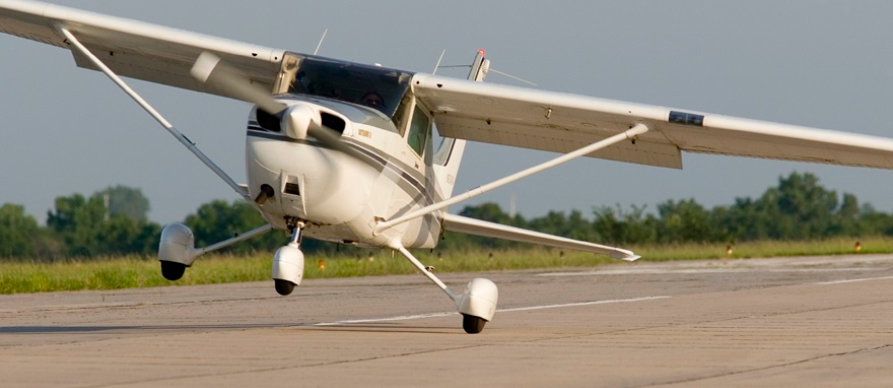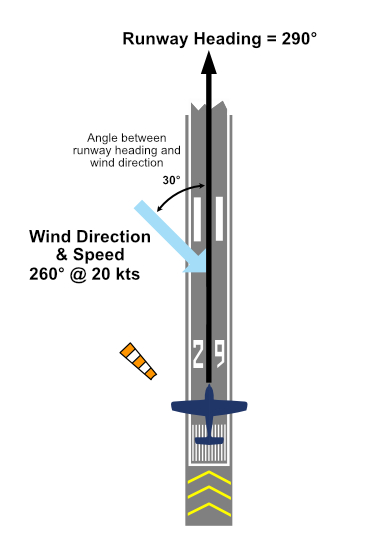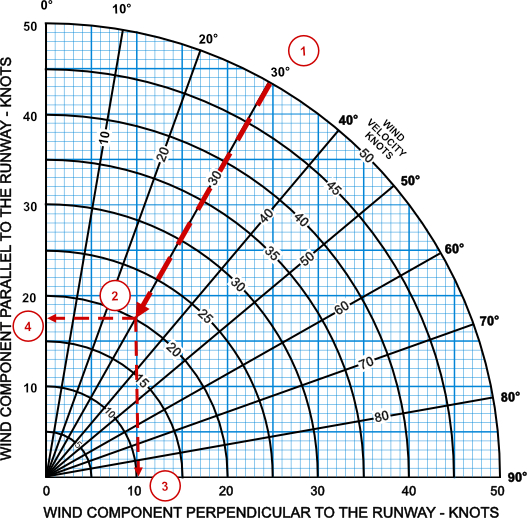
Airplanes have a limit to the amount of direct crosswind in which they can safely take off and land with. This is set by the aircraft manufacturers and can be found in the Pilot’s Operating Handbook (POH)
When the wind is not blowing directly down the runway, a crosswind component chart may be used to determine the amount of direct crosswind.
Variables on the crosswind component charts are
- The angle between wind direction and the runway direction.
- The wind velocity
For every take off and landing that a pilot performs, they must determine what factors affect the performance of the aircraft in the take off. Calculating as to whether the airplane is within the published (and allowed) crosswind component is one of these crucial calculations. It is important to realize that any calculated performance may be different from what is experienced during taking off.
As a Part 91 pilot, there’s nothing that prevents you from landing in crosswinds stronger than the maximum demonstrated crosswind, and many pilots do. However the POH states the maximum crosswind component has been tested to, and recommends pilots to adhere to. If you choose to land in crosswind conditions stronger than the maximum demonstrated crosswind velocity, you do so at your own risk. Remember if you have an issue landing in such conditions you may have some explaining to do! You do need to be a proficient pilot to safely land in any crosswinds and especially those that are stronger than the maximum demonstrated crosswind.
If you find that you are in conditions that execeeds the POH’s maximum demonstrated crosswind component, is it OK to takeoff land in stronger crosswinds?
Think twice before either taking off or accepting a clearance that puts you beyond the maximum component. If you’re not feeling completely comfortable with a strong crosswind, the safest thing you can do is:
- Perform a go around,
- Consider using another runway,
- Wait for the conditions to improve,
- Divert.
Note: East Coast Aero Club has a policy prohibiting student pilots from landing or taking off in certain wind conditions.
ECAC Wind Limitations for all student pilots are:
- Max wind of 17 Kts
- Max crosswind of 7 Kts Max –
- Gusts not to exceed 5 Kts
Calculating Crosswind Component
The crosswind component is the portion of the wind’s velocity that is perpendicular to the direction of travel (e.g., the runway or flight path).
Crosswind component can be calculated using the Crosswind component chart (below)

Calculating Crosswind – Example
In this example (below)
- You are intending to take off or land on the active Runway 29 (290°)
- The winds are reported as 260° at 20 knots

Your airplane maximum crosswind component is 17 kts
You need to perform a calculation to make sure that these wind conditions does not exceed the maximum crosswind component of your airplane.
Can you fly in these conditions?
Solving the Crosswind Example
To solve for these wind conditions you would use the crosswind component chart:
- Find the angle between the wind and the runway – in this example the angle is 30°
- Follow the wind angle line down to the wind speed – in this example the angle is 20 kts
- Plot the crosswind component – in this example the crosswind component is 10 kts
- Plot the headwind component – in this example the headwind component is 17 kts

With a crosswind component of 17 kts for your airplane – you are within the limits of the crosswind component as specified in the the POH
– However – Remember that ECAC places wind limitations for all student pilots flying solo – they are:
- Max wind of 17 Kts
- Max crosswind of 7 Kts Max –
- Gusts not to exceed 5 Kts
The maximum wind for ECAC students pilots to fly solo have been exceeded (20 kts)
The maximum crosswind for ECAC students to fly solo have been exceeded (7 kts)
As a student pilot – you would not be permitted to fly solo with these weather conditions!
Understanding crosswind components will allow you ensure that you are safe to fly by not exceeding the manufacturers specifications of any given aircraft.
This calculation should be performed any time there is a wind that is not directly down the runway – this is most of the time!